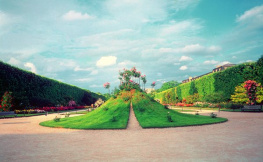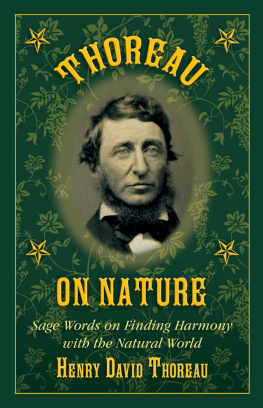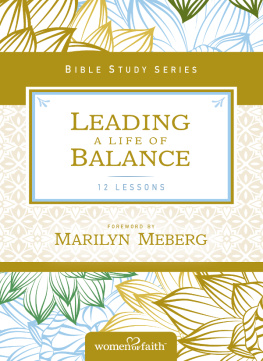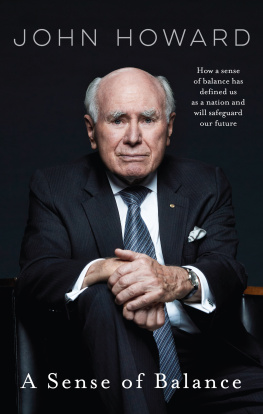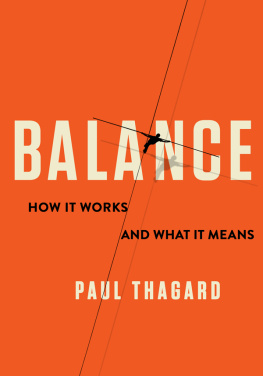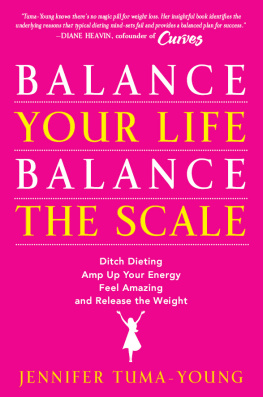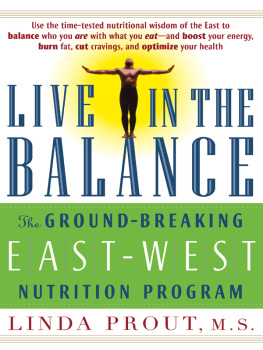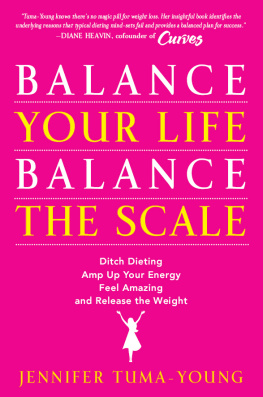John K. Grande - Balance Art and Nature
Here you can read online John K. Grande - Balance Art and Nature full text of the book (entire story) in english for free. Download pdf and epub, get meaning, cover and reviews about this ebook. year: 1995, publisher: BookBaby, genre: Art. Description of the work, (preface) as well as reviews are available. Best literature library LitArk.com created for fans of good reading and offers a wide selection of genres:
Romance novel
Science fiction
Adventure
Detective
Science
History
Home and family
Prose
Art
Politics
Computer
Non-fiction
Religion
Business
Children
Humor
Choose a favorite category and find really read worthwhile books. Enjoy immersion in the world of imagination, feel the emotions of the characters or learn something new for yourself, make an fascinating discovery.
- Book:Balance Art and Nature
- Author:
- Publisher:BookBaby
- Genre:
- Year:1995
- Rating:5 / 5
- Favourites:Add to favourites
- Your mark:
- 100
- 1
- 2
- 3
- 4
- 5
Balance Art and Nature: summary, description and annotation
We offer to read an annotation, description, summary or preface (depends on what the author of the book "Balance Art and Nature" wrote himself). If you haven't found the necessary information about the book — write in the comments, we will try to find it.
Balance Art and Nature — read online for free the complete book (whole text) full work
Below is the text of the book, divided by pages. System saving the place of the last page read, allows you to conveniently read the book "Balance Art and Nature" online for free, without having to search again every time where you left off. Put a bookmark, and you can go to the page where you finished reading at any time.
Font size:
Interval:
Bookmark:


Copyright 2014 John K. Grande
No part of this book may be reproduced or transmitted in any form, by any means electronic or mechanical including photocopying and recording, or by any information storage or retrieval systemwithout written permission from the author, or, in the case of photocopying or other reprographic copying, a license from the Canadian Reprography Collective, with the exception of brief passages quoted by a reviewer in a newspaper or magazine.
National Library of Canada Cataloguing in Publication Data Grande, John K.
Balance: Art and Nature / John K Grande.
Includes bibliographical references and index.
1. Creation (Literary, artistic, etc.) 2. Art Modem-20th century-Economic aspects. 3. Art, Modem-20th century-Social aspects. 4. Artists-Psychology.
5. Nature (Aesthetics)
E-Book ISBN 978-0-9938036-0-4
Caver design: Rasa Paoilams. Cover Photo: Andy Goldsworthy, Arizona, 1989, courtesy the artist
Contents
Praise for John K. Grande
"Grande defines a future where small-scale societies exist in harmony with their individual bio-regions, and he finds art that articulates this vision. His writing is clear and blessedly free of postmodern jargon." -Public Art Review
"Demonstrates that art criticism doesn't have to give readers a headache. His grasp of detailsboth artistic and politicalmakes this book convincing, and interesting." -Books In Canada
"One doesn't have to agree with everything Grande writes in order to welcome this book's arrival." -Globe and Mail
"Ideas are plentifulGrande is clearly versed and passionate about nature's role in art." -Quill & Quire
"Fascinating readingGrande has assembled an enormous breadth of material and judged it from the perspective of a well-informed heart."- Montreal Gazette
"Grande makes an important statement. Despite the various causes artists embrace we still have one common cause: to preserve the earth."-McGill Daily
"Reinvigorates my desire to consider contemporary art as a vital form of expression and encourages the reader to see that art in relation to daily life and society at large." -Canadian Forum
"Engaging, provocative and thoughtfulGrande cares passionately about art, the environment, and the relationship between them."Compassalso by John K. Grande
INTERTWINING: Artists, Landscape, Issues, Technology
Over forty essays and reviews around the themes of artists, landscape, issues, and technology. Topics include the effects of the Internet on museums and education; artists working in and around a nature park; agriculture as art; the artists' response to breast cancer; to animal rights; to violence and children's toys; to art and illness.
"Grande's essays have literary merit and insight that remain vital. When critics do their work well, they increase their readers' understanding of art."Hour
"A readable, engaging book Grande has taken contemporary art out of the exclusive domain of the art world demi-gods and given it back to anyone who dips into this collection." -Canadian Forum320 pages, photographs, index Paperback ISBN: 1-55164-110-0 $24.99 Hardcover ISBN: 1-55164-111-9 $53.99
Introduction
"Which nature? Whose art?" reads the brochure from the Tranekaer International Art and Nature Centre (TICKON). Located on the island of Langeland in Denmark, TICKON is a recently established testing ground for an art dedicated to creating a new relationship between humanity and nature. For artists working towards the betterment of "a world that is vulnerable in some absolute sense,"' this relationship is crucial..For centuries we have assumed that history and art are a series of progressions inimically tied to the economic progress of Western civilization. Our cultural conception of nature, like environmental art itself, has defined nature as "aesthetic real estate" mere matter to be manipulated, transposed and reformed in order to affirm our superiority over nature. Duchamp once said; "Man invented art. It wouldn't exist without him. Art has no biological source. Ifs addressed to a taste," yet who could now deny that art has always been a part of nature? Art is as necessary to society as the sun is to nature, for it sheds light, to paraphrase Gauguin, on who we are, where we come from and where we are going. It is a point many of today's assemblage artists should remember. By appropriating and manipulating the flotsam and jetsam of industrial society in new and ingenious ways, artists such as Tony Cragg, Bill Woodrow, David Mach and Richard Deacon allude to the malaise of overproduction and consumption. A seemingly reflexive response to utilitarianism and resource exploitation run amok, their work does nothing to reconnect us with nature: it merely reaffirms the syntax of the industrial product.
David Mach's massive installations Ploughman's Lunch, exhibited at the Milton Keynes Shopping Centre in England, and The Art that Came Apart, exhibited at the Musee d'art contemporain in Montreal are the most extreme examples. A kind of temporary performance sculpture, these works were literally built up out of tons of magazines and various consumer products including television sets, a piano, a bulldozer, cars, and a canoe to name but some of the items. This eco-Pop brand of postconsumer art may look more contentious than a Magdalena Abakanowicz or Shigeo Toya, but the effect is hardly as profound or lasting. The inner ear of these altered product statements will always be their materials' original, natural context. Ashley Bickerton deals with these problematic issues by encasing industrial waste, seed pods, trash, dried grasses and earth or, as in a work titled Minimalism's Evil Orthodoxy Monoculture's Totalitarian Esthetic #1 (1989), by juxtaposing soil and crop samples from South America, Asia and Africa. Another Bickerton piece approached the question as it relates specifically to artist's materials: two structurally designed boxes had tiny squares of cadmium yellow and cadmium red painted within them the toxic components in cadmium were listed on the boxes' sides.
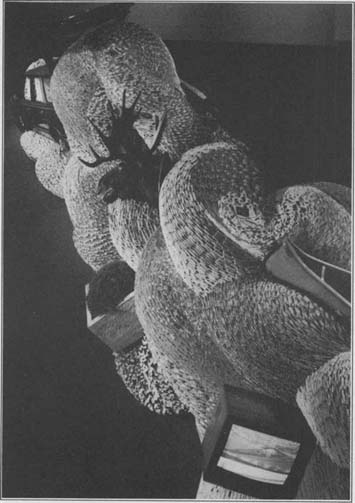
David Mach.The Art that Came Apart(detail), 1989. Exhibited at the Musee d'art contemporain de Montreal, Montreal. Photo by Ron Diamond. Photo courtesy of the artist.
At the other end of the spectrum, responding directly to various aspects of climate, geology, vegetation, even other life forms, today's most prominent environmental artists David Nash, Karen McKoy, Andy Goldsworthy, Giuliano Mauri, Jane Balsgaard, Lars Viks and Nils-Udo among others express these concerns by creating natural constructions: installing plantings, welding ice assemblages, making dandelion chains, grafting tree forms, arranging patterns of berries and leaves in idyllic backwoods settings far from the hue and cry of the urban centres where most of us live. But the question arises, while these works may present themselves as ecologically sensitized, how socially involved is this new vision?
It has been a long time since we idealized landscapes and saw nature as a seemingly inexhaustible reserve as the Romantics did when the first factory smokestacks went up. As environmental artists opposed to the alienation and confused reality of our cities attempt to rediscover nature on its own terms, they proffer a vision of art as a detail of the landscape. Disconnected from the root cause of environmental devastation a burgeoning civilization and economy based on profit and competition this brand of environmental art is as exclusive in its purist vision as formalist art. In one of her "mock monuments" titled
Next pageFont size:
Interval:
Bookmark:
Similar books «Balance Art and Nature»
Look at similar books to Balance Art and Nature. We have selected literature similar in name and meaning in the hope of providing readers with more options to find new, interesting, not yet read works.
Discussion, reviews of the book Balance Art and Nature and just readers' own opinions. Leave your comments, write what you think about the work, its meaning or the main characters. Specify what exactly you liked and what you didn't like, and why you think so.

